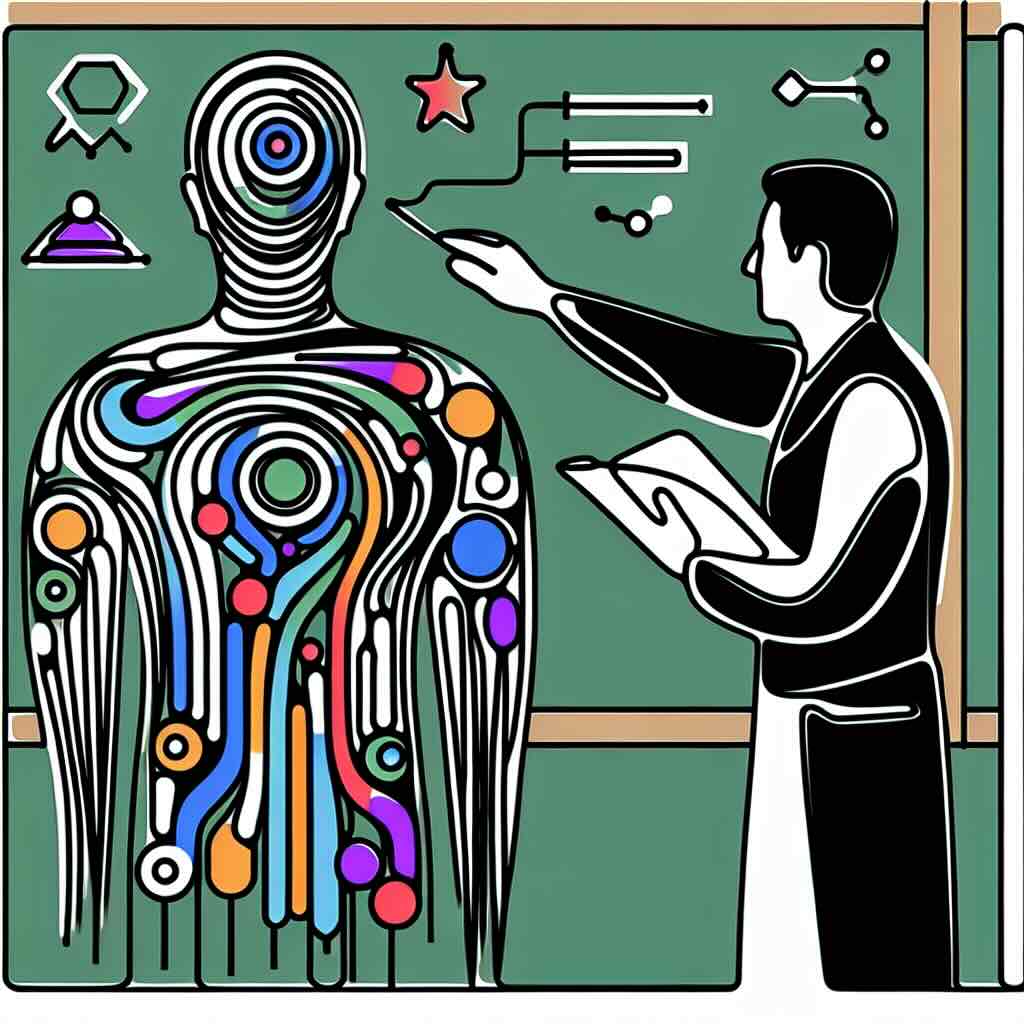Learning is often mistaken for content engagement, yet meaningful learning comes from lived experience. It grows through action, collaboration, reflection, emotion and application. This post explores why humans learn best through doing, not absorbing, and provides examples from workplace learning, higher education and professional training. It offers practical ways to design lived learning experiences, from scenarios and practice loops to storytelling and peer interaction. As AI accelerates content creation, the real value now lies in designing experiences that build confidence and capability. Learning improves when we focus less on what learners read, and more on what they do.
Table of Contents
- Why learning is more than content consumption
- The difference between learning and content engagement
- Learning as a lived experience: what this really means
- Why humans learn best through experience
- Six core elements of lived learning
- Examples of lived learning in real contexts
- Why content alone cannot build competence
- How to design lived learning experiences
- Using stories to deepen the lived experience
- Why social learning amplifies impact
- How technology supports lived learning
- The dangers of content-heavy design
- One thing you can try today
- Benefits of designing for lived learning
- Trade-offs and what to watch out for
- Conclusion: learning is something we live, not something we consume
Why learning is more than content consumption
We can now produce content faster than ever. AI can summarise, rewrite and generate pages of material in seconds. Of course, none of this guarantees learning. Content engagement is not engaged learning, and it never has been. Learners can read, watch or scroll through vast amounts of information without challenging how they think or changing what they can do.
Meaningful learning has always been a lived experience. It happens when people take part in activities, practise skills, make decisions, collaborate with others and see the results of their actions. These experiences create the understanding and confidence that content alone cannot provide. As the designers of future learning experiences, we must regularly remind ourselves that our role is not pushing content. It is to create real experiences that lead to change and demonstrable learning outcomes.
The difference between learning and content engagement
Content engagement is about exposure. It answers the question, “Have they seen it?” Learning answers the much more important question, “Can they do it?”
Content alone can help learners acquire surface-level understanding. They may be able to recall facts or definitions in the moment. But real competence comes from doing something with that information. That requires activity, challenge, interaction and reflection. If content were enough, organisations would not need trainers, educators or learning designers. We exist because content is only the starting point. The real work happens when learners apply, test and personalise what they encounter.
Learning as a lived experience
A lived learning experience is active, social and grounded in real decision-making. It is not just the delivery of information but the creation of a journey that shapes understanding. Lived learning engages the senses. It encourages learners to talk, think, question and act. It brings emotion into the process through challenge, uncertainty, storytelling and discovery. These elements help learners build memories that last and skills that transfer into real situations.
Learning can be recognised as a verb as it is something to do, not something that happens to them.
Why humans learn best through experience
Cognitive science shows that humans learn through active processing. We strengthen memory when we retrieve information, make decisions, practise skills and link new knowledge to what we already know. We understand concepts more deeply when we feel them, try them and see the consequences. This is why simulations, projects, group discussion, spaced retrieval, reflection and hands-on practice are so powerful. They create cognitive “hooks” that plain content simply cannot deliver.
Experience builds confidence. Confidence creates agency. Agency leads to long-term learning.
Six core elements of lived learning
Action
Tasks, decisions, practice and problem-solving build capability. Learners become confident through doing.
Collaboration
Learning with others creates accountability and shared insight. Ideas grow stronger through discussion and challenge.
Reflection
Learners make sense of their experiences when they stop to think about them. Reflection turns activity into understanding.
Iteration
Trying, failing, adjusting and trying again helps learners refine their skills. This teaches resilience and adaptability.
Emotion
Emotion strengthens memory. Confusion, curiosity, surprise and satisfaction all contribute to deeper learning.
Application
Using knowledge in realistic scenarios links theory to practice and supports authentic performance.
Examples of lived learning in real contexts
A GDPR [data protection] course transformed through stories
Instead of listing regulations, the course follows a team of data controllers who misunderstand risk. Learners make decisions for the team and see the consequences. The story creates emotional investment and brings the topic to life.
Nursing simulations
Students practise clinical scenarios on simulated wards, then debrief together. The learning happens in the doing, the discussion and the reflection.
Customer service training
Teams rehearse difficult conversations, record them, and analyse the results. The learning emerges from practice and feedback, not content alone.
Apprenticeship programmes
Learners build skills through real tasks, supervised work and structured practice. Content supports the experience rather than replacing it.
Coding bootcamps
Learners work on live projects with immediate feedback from peers and mentors. This teaches problem-solving, teamwork and resilience.
Why content alone cannot build competence
Content alone does not create skill, it rarely builds judgement and it cannot replicate the complexity of real-life decisions. When learners only consume content, they may feel confident, but this can be an illusion of knowing. Without practice, confidence collapses when the first real challenge appears. Competence requires activity, feedback and reflection. These are the elements that move learning from exposure to mastery.
How to design lived learning experiences
Begin with a simple question: “What must the learner actually do?” Then build a learning journey that encourages that behaviour.
For example
- Convert content into decisions
- Replace explanations with short scenarios
- Add moments of choice or challenge
- Design peer or group activity
- Create small tasks instead of long texts
- Build reflective check-ins
- Use practice loops with quick feedback
- Make room for sharing stories or perspectives
You do not need complex production. If anything, you can cut content production in exchange for designing active, engaging learning experiences. All you need to add is clarity about what learners must experience, how they'll do it and what happens next. The What?, So What?, Now What? reflection framework is a powerful tool for lived learning experiences.
Using stories to deepen learner's lived experiences
Stories bring learning to life. They invite learners into a situation, create emotional commitment and help them see the relevance of the topic. A good story builds connection and meaning, it can turn policy into consequence, theory into reality and information into insight. Stories also help learners link new ideas to their own experiences, which strengthens retention and understanding.
Why social learning amplifies impact
People learn better together, and social learning can be a huge enabler for creating and facilitating engaging experiences. Learners sharing ideas can build connections unachievable by an educator, it can help boost confidence and learners explaining concepts to peers will strengthen their own understanding. Discussing challenges helps learners see different viewpoints. Workplace learning, higher education and online programmes all benefit from social learning. It reduces isolation and builds motivation. When learning becomes something learners do with others, engagement rises naturally.
How learning technology supports lived learning
Learning technology should support experiences, not replace them. The best tools help learners practise, reflect, collaborate and receive feedback at the right moments. AI can help transform content into activities, simulate personas, provide review comments and generate examples or explanations. LMS platforms support interactive tasks, quizzes, group discussions and peer review.
Coursensu helps teams design experiences, not just pages. It visualises learning flow, supports learning types and encourages active approaches throughout the process. The Course Companion helps educators check alignment, understand learner experience and receive tailored feedback on live courses. These are two examples of how you can use learning technology to creating, and adapt, lived learning rather than just as a content delivery system.
The dangers of content-heavy design
Content alone does not build skill, confidence or capability - you'll need to be mindful of the alignment with the learning outcomes, and how well your learners are prepared, and supported when designing for learning.
- Cognitive overload
- Low retention
- Limited transfer to the real world
- Poor motivation
- Isolation and disengagement
- Illusions of knowing
- Expensive content production with low impact
One thing you can try today
Take one content-heavy item from a course you are working on.
- Ask yourself: “What could learners do instead of simply reading, watching or listening to this?”
- Create a short decision, a question, a reflection or a scenario that encourages a consumption pause and an action within each learner.
- Test it with one colleague or learner (or use a simulated review persona)
Use this short test to see how much more memorable and engaging it becomes in the short term. Then consider longer-term evaluation tools to measure the difference with your learners.
Benefits of designing for lived learning
- Higher motivation and participation
- Stronger understanding and recall
- Better real-world performance
- More confidence and independence
- Richer feedback loops
- More meaningful learning experiences
Trade-offs and any 'gotchas' to look out for
- Some activities take longer to plan
- Facilitators may need support
- Learners need time to adjust
- More active learning sometimes feels harder
- Requires thoughtful sequencing and pacing
These are small costs compared to the value lived learning creates but important as design considerations when making changes.
Conclusion: Learning is something we do, not some content to consume
Content has a place in learning, but it cannot do the job alone. Real learning is a lived experience. It involves action, connection, reflection and application. When we design for experience rather than exposure, we create learning that stays with people and changes how they think and act. As AI accelerates content creation, the value of lived learning becomes even more important. Experiences shape capability. Content should support the learning experience, not the other way around.






